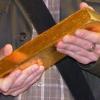I think the study shows 3 things:
1) NAD+ boosting recovers muscle
2) NR performs better than nicotinamide
3) The dosing might not need to be high as its not needed to recover NAD+. My own speculation is that the body start off with having an abundance of NAD+ and problems start when a certain threshold low value is achieved. So we may only need to boost till this threshold.
NR performs better than nicotinamide only in mNKO mice. Means they turned off Nampt : muscle-specific Nampt knockouts
They explain the small increase is due to the fact most NR is actually converted into Nicotinamide before it reach the muscle (targeted area).
Disproportion does not mean bad at all. They dont see negative result there. At least I dont see where after reading their graph
Actually what I see is: NR increase just a bit NAD+ when Nampt is turned off, the result looks clear to me. NR fail to recover mNKO mice from their state.
So Bryan and Stefan, you understood this not correctly: "NAD can disproportionately modulate aerobic metabolism". Why ? Because this just means that mitochondria isolated from C2C12 myotubes treated with FK866 and NR, you have NR that does not act proportionately in its ability to increase back complex I-dependent respiratory O2 consumption and NAD amount in mito. It seems at 10uM NR you reach the point where the respiratory is optimal and will remain stable while you increase more NAD with better dose. Thats all !
I dont mean the crash is not possible, but this study does not show us that. Its more a report for me of how important is Nampt once again, so this is my targeted area recently...
It also show NR in low dose can have positive effect
Hi Tom, I would describe it differently: this study shows that "NR, at least, performs better than nicotinamide in mNKO mice". I thought the difference was actually quite impressive, more than I expected. Check figure S5, I attached a cutout from it.
This is the clarification the authors gave with regards to NAD concentration:
"we were surprised to find that NR exerts only a subtle influence on the steady-state concentration of NAD in muscles. Our tracer studies suggest that this is largely attributable to breakdown of orally delivered NR into NAM prior to reaching the muscle. Nonetheless, our results indicate that NR is more effective than NAM for reversing mNKO phenotypes (Figure S5). The correlation between the NAD content and the respiratory capacity of isolated mitochondria, even in cultured myotubes (Figure 4), supports the model that subtle changes in NAD can disproportionately modulate aerobic metabolism. It is important to note that NAD turnover may vary independently from NAD concentration and that small changes in average tissue concentration might reflect larger changes in specific cells or subcellular compartments. It is also possible that intramuscular conversion of NAD into secondary messengers potently influences calcium homeostasis, which is both essential to muscle contraction and can independently modulate mitochondrial respiration"
So while your statement is true it appears to not matter from an impact perspective.

































 This topic is locked
This topic is locked




























